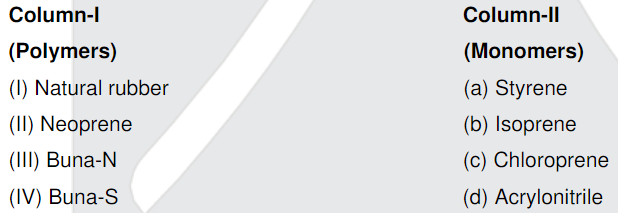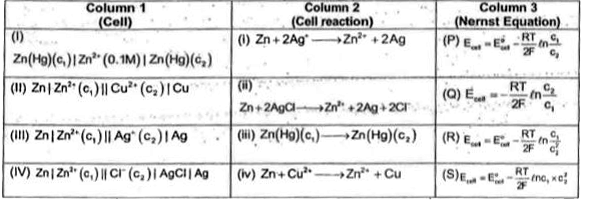Which of the following combination cannot be bufffer?
NH4Cl and NH4OH
HCL and NH4Cl
KCL and HCL
CH3COOH and CH3COONa
To determine which combinations cannot be buffers, we need to understand what constitutes a buffer solution. A buffer solution is typically made up of either:
1. A weak acid and its salt (formed with a strong base).
2. A weak base and its salt (formed with a strong acid).
Now, let's analyze the given options step by step.
Step 1: Analyze the first option - NH4Cl and NH4OH
- NH4OH is a weak base (ammonium hydroxide).
- NH4Cl is the salt of this weak base with a strong acid (HCl).
- Since we have a weak base (NH4OH) and its corresponding salt (NH4Cl), this combination can act as a buffer.
Step 2: Analyze the second option - HCl and NH4Cl
- HCl is a strong acid.
- NH4Cl is the salt of a weak base (NH4OH) with a strong acid.
- Since HCl is a strong acid, this combination cannot form a buffer solution. Buffers require either a weak acid or a weak base, not a strong acid.
Step 3: Analyze the third option - KCl and HCl
- KCl is a neutral salt.
- HCl is a strong acid.
- Similar to the previous case, since HCl is a strong acid, this combination cannot form a buffer solution.
Step 4: Analyze the fourth option - CH3COOH and CH3COONa
- CH3COOH (acetic acid) is a weak acid.
- CH3COONa (sodium acetate) is the salt of this weak acid with a strong base (NaOH).
- This combination satisfies the buffer criteria, as it consists of a weak acid and its corresponding salt.
Conclusion
From the analysis, we find that:
- The combinations that cannot be buffers are HCl and NH4Cl (Option 2) and KCl and HCl (Option 3).
Final Answer:
Options 2 and 3 cannot be buffers.
---
2. A weak base and its salt (formed with a strong acid).
- NH4OH is a weak base (ammonium hydroxide).
- NH4Cl is the salt of this weak base with a strong acid (HCl).
- Since we have a weak base (NH4OH) and its corresponding salt (NH4Cl), this combination can act as a buffer.
- HCl is a strong acid.
- NH4Cl is the salt of a weak base (NH4OH) with a strong acid.
- Since HCl is a strong acid, this combination cannot form a buffer solution. Buffers require either a weak acid or a weak base, not a strong acid.
- KCl is a neutral salt.
- HCl is a strong acid.
- Similar to the previous case, since HCl is a strong acid, this combination cannot form a buffer solution.
- CH3COOH (acetic acid) is a weak acid.
- CH3COONa (sodium acetate) is the salt of this weak acid with a strong base (NaOH).
- This combination satisfies the buffer criteria, as it consists of a weak acid and its corresponding salt.
From the analysis, we find that:
- The combinations that cannot be buffers are HCl and NH4Cl (Option 2) and KCl and HCl (Option 3).
Options 2 and 3 cannot be buffers.
Topper's Solved these Questions
- BOOK - RESONANCE ENGLISHCHAPTER - IONIC EQUILIBRIUMEXERCISE - Exercise 1 part 2 only one option correct type25videos
IONIC EQUILIBRIUM
- BOOK - RESONANCE ENGLISHCHAPTER - IONIC EQUILIBRIUMEXERCISE - Part 1 only one option correct type7videos
IONIC EQUILIBRIUM
- BOOK - RESONANCE ENGLISHCHAPTER - IONIC EQUILIBRIUMEXERCISE - Exercise -3 part-2 JEE main12videos
IONIC EQUILIBRIUM
- BOOK - RESONANCE ENGLISHCHAPTER - HYDROCARBONEXERCISE - ORGANIC CHEMISTRY(Hydrocarbon)50videos
HYDROCARBON
- BOOK - RESONANCE ENGLISHCHAPTER - IUPAC NOMENCLATURE & STRUCTURAL ISOMERISM EXERCISE - Advanced Level Problems Part-52videos
IUPAC NOMENCLATURE & STRUCTURAL ISOMERISM
Similar Questions

Which of the following anion cannot be in X?View Solution
Which of the following anion cannot be in X?View Solution
Which of the following combination is correct:View Solution
Which of the following combination is correct:View Solution

Which of the following combination is correct ?View Solution
Which of the following combination is correct?View Solution
Which of the following combination is correct?View SolutionWhich of the following combinations is correct ?
View SolutionWhich of the following combinations is correct?
View Solution
Which of the following combination is CORRECT ?View Solution

